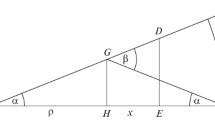Summary
The absence of an Olbers paradox for neutrinos shows that the average neutrino luminosity must fall off as we observe older and more distant parts of the universe. Unlike the situation for light, the « paradox » could not be avoided by any kind of red shift, and hence puts a strong constraint on cosmological speculation. The ambient neutrino flux turns out to be finite in the modern steady state or evolutionary cosmologies, and is estimated at about 103 neutrinos/cm2 s. Taking absorption of neutrinos into account does not affect these remarks, except that in the oscillating cosmologies there must recur periods when neutrino absorption is faster than neutrino emission. It is estimated that the onset of neutrino absorption for an oscillating universe comes when it has contracted by a (linear) factor of about 105, and absorption might not lower the neutrino population very much until the contraction reaches about 1014.
Riassunto
L’assenza del paradosso di Olbers per i neutrini indica che la luminosità media dei neutrini deve diminuire quando osserviamo parti dell’universo più antiche e più distanti. Diversamente dalla situazione per la luce, il « paradosso » non potrebbe essere evitato con nessun tipo di spostamento verso il rosso, e quindi pone una forte limitazione alla speculazione cosmologica. Il flusso ambientale dei neutrini risulta finito nel moderno stato uniforme delle cosmologie evoluzionistiche e si stima a circa 103 neutrini/cm2 s. Il tener conto dell’assorbimento dei neutrini non influisce su queste osservazioni, salvo il fatto che nelle cosmologie pulsanti si devono ripetere periodi in cui l’assorbimento dei neutrini è più veloce della loro emissione. Si stima che l’insorgere dell’assorbimento dei neutrini in un universo pulsante ha luogo quando esso si è contratto di un fattore (lineare) di circa 105, e l’assorbimento non può diminuire di molto la popolazione di neutrini sinchè la contrazione non giunge a circa 1014.
Similar content being viewed by others
References
A general discussion of the Olbers paradox for light has been given byH. Bondi:Cosmology, Chapter III (Cambridge, 2nd Edition, 1960). Our derivation of the neutrino and photon fluxes follows closely his discussion in Chapters X and XII.
H. Bondi andJ. Gold:Mon. Not. Roy. Astr. Soc.,108, 252 (1948);F. Hoyle:Mon. Not. Roy. Astr. Soc.,108, 372 (1948).
T. D. Lee andC. N. Yang:Phys. Rev. Lett.,4, 307 (1960).
Reference (1), eq. (10.9).
Author information
Authors and Affiliations
Additional information
This work was supported in part by the United States Air Force under Contract No. AF 49(638)-327 monitored by the Air Force Office of Scientific Research of the Air Research and Development Command and the Office of Naval Research under Contract No. r-222(60) (NRO41-221).
Rights and permissions
About this article
Cite this article
Weinberg, S. The neutrino problem in cosmology. Nuovo Cim 25, 15–27 (1962). https://doi.org/10.1007/BF02733312
Received:
Published:
Issue Date:
DOI: https://doi.org/10.1007/BF02733312



